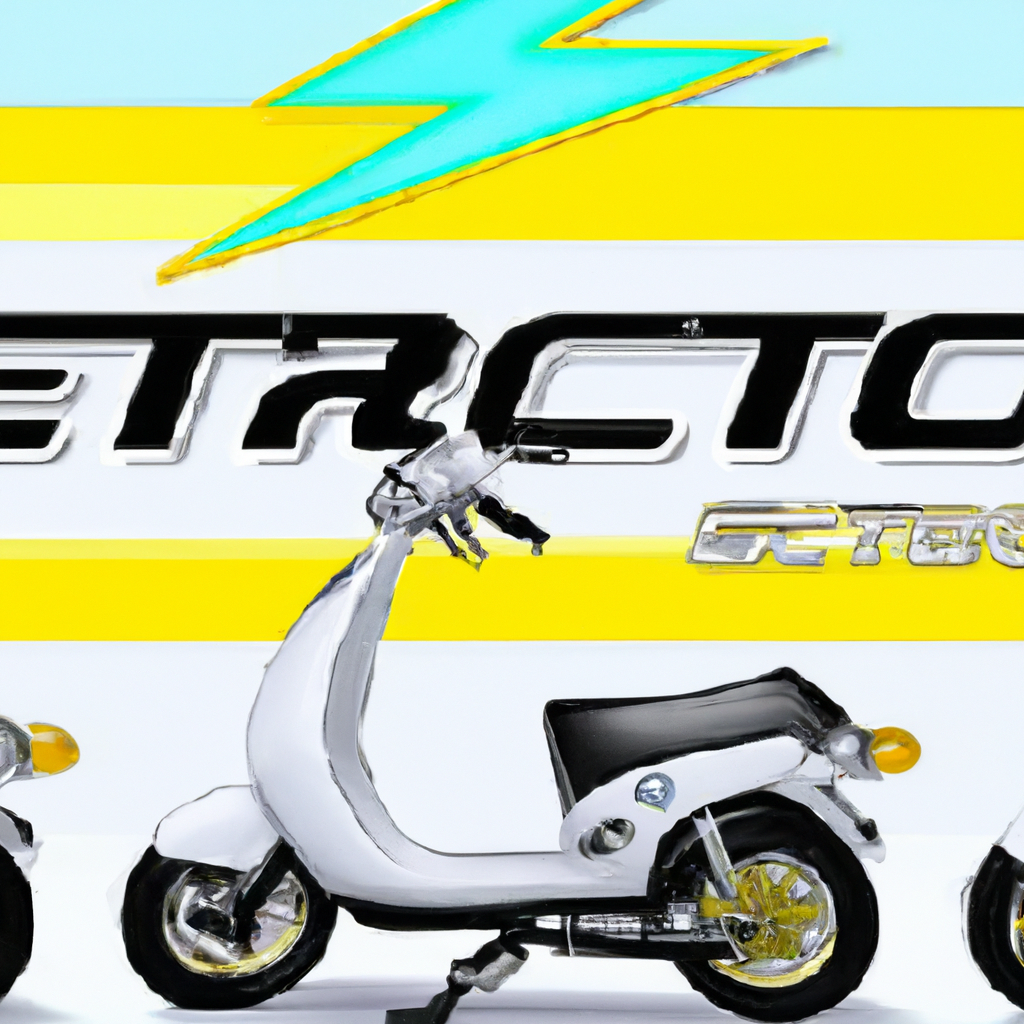Have you ever wondered how fast electric scooters can go? Well, wonder no more! In this article, we’ll explore the thrilling speeds these sleek and eco-friendly vehicles can reach. From zipping through busy city streets to cruising along scenic paths, electric scooters offer a convenient and exhilarating mode of transportation. Whether you’re a fan of adrenaline-pumping rides or simply looking for a fun way to get around, join us as we uncover the impressive speeds these modern marvels can achieve. Get ready to be amazed by the possibilities of electric scooters!

Types of Electric Scooters
Electric kick scooters
Electric kick scooters are the most common type of electric scooters available in the market. These scooters are compact, lightweight, and designed for shorter commutes. They typically have a foldable design, making them portable and easy to carry. Electric kick scooters are propelled by a small electric motor and can reach speeds of up to 15-20 miles per hour (24-32 kilometers per hour), depending on various factors such as battery capacity, motor power, and rider weight. These scooters are great for urban environments and are often used for commuting short distances.
Electric mopeds
Electric mopeds are a step up from electric kick scooters in terms of size and power. These scooters are equipped with larger motors and batteries, allowing them to travel at higher speeds and cover longer distances. Electric mopeds usually have a seat, making them more comfortable for longer rides. The maximum speed of electric mopeds can range from 25 to 40 miles per hour (40-64 kilometers per hour), depending on the model and power rating. They are a popular choice for individuals who need a reliable mode of transportation for daily commutes or leisure rides.
Electric motorcycles
Electric motorcycles are the fastest and most powerful type of electric scooters available. These scooters are designed to closely resemble traditional gasoline-powered motorcycles, offering high-performance capabilities. Electric motorcycles have larger and more powerful motors compared to electric kick scooters and mopeds. Consequently, they can reach impressive speeds of up to 60-80 miles per hour (96-129 kilometers per hour) and even higher in some cases. Electric motorcycles are perfect for those who seek the thrill of riding at high speeds while enjoying the environmental benefits and cost savings of electric propulsion.
Legal Limitations
Local regulations
Before riding an electric scooter, it is essential to familiarize yourself with the local regulations governing their use. Different cities and countries have varying laws regarding electric scooters, and it is crucial to comply with these rules to ensure your safety and avoid legal implications. Some cities may require registration, licensing, or specific safety equipment for electric scooters, while others may prohibit their use on certain roads or sidewalks. By understanding and adhering to these regulations, you can enjoy your electric scooter responsibly and legally.
Speed restrictions
Another factor to consider when riding an electric scooter is the speed restrictions imposed by local regulations. Many cities have set maximum speed limits for electric scooters to ensure the safety of riders and pedestrians. The speed limits typically vary depending on the type of scooter and the designated areas of use. While electric kick scooters and mopeds are generally subject to lower speed restrictions, electric motorcycles may have higher speed limits due to their superior performance capabilities. It is crucial to stay within the designated speed limits to prevent accidents and potential legal issues.
Factors Affecting Speed
Battery capacity
The battery capacity of an electric scooter is one of the primary factors that affect its maximum speed. A larger battery capacity allows for a higher power output, which translates to increased speed. Scooters with higher battery capacities can generate more energy, providing the motor with the necessary power to propel the scooter at faster speeds. However, it is important to note that larger batteries often result in increased weight, which can impact the scooter’s overall performance and range.
Motor power
The power of the electric motor also plays a significant role in determining the maximum speed of a scooter. A more powerful motor can deliver higher torque, allowing the scooter to accelerate faster and maintain higher speeds. Scooters with larger motors can handle steeper inclines and provide a smoother riding experience. Higher motor power equates to increased speed potential, but it is crucial to strike a balance between power and battery efficiency to ensure optimal performance.
Rider weight
The weight of the rider directly affects the scooter’s maximum speed. Heavier riders may experience a slight decrease in speed compared to lighter riders due to the additional load placed on the motor and battery. However, the impact of rider weight on speed is typically minimal and may vary depending on the scooter’s power and performance capabilities. It is always recommended to consider the weight limit specified by the scooter manufacturer to ensure optimal performance and safety.
Terrain conditions
The type of terrain on which you ride your electric scooter can significantly impact its maximum speed. Scooters are typically designed for use on flat or moderately inclined surfaces, such as sidewalks or bike lanes. Riding on hilly or uneven terrain can reduce the maximum speed due to increased resistance and the scooter’s inability to maintain high speeds uphill. Similarly, off-road conditions or rough surfaces can limit the scooter’s speed, as the motor may have to work harder to navigate through obstacles.
Weather conditions
Weather conditions, particularly strong winds, can affect the maximum speed of an electric scooter. Riding against a headwind can decrease the scooter’s speed, requiring more power from the motor to maintain desired speeds. Conversely, riding with a tailwind can provide a slight speed boost. Additionally, wet or slippery surfaces can reduce traction, affecting the scooter’s ability to reach and maintain high speeds safely. It is important to adjust your riding style and speed accordingly in adverse weather conditions to ensure both your safety and the longevity of your scooter.
Maximum Speed for Electric Kick Scooters
Standard electric kick scooters
Standard electric kick scooters, commonly used for daily commutes and short trips, typically have a maximum speed range of 15-20 miles per hour (24-32 kilometers per hour). These scooters strike a balance between portability, efficiency, and speed, making them a popular choice among urban commuters. They offer a quick and convenient way to navigate through busy city streets without being overly powerful or intimidating.
High-performance electric kick scooters
For those seeking a faster and more exhilarating riding experience, high-performance electric kick scooters are available. These scooters feature more powerful motors, larger batteries, and better suspension systems to handle higher speeds and rougher terrains. High-performance electric kick scooters can reach speeds of up to 30-40 miles per hour (48-64 kilometers per hour) or more, depending on the model. However, it is essential to exercise caution when riding at these speeds and ensure that you are in compliance with local regulations and safety requirements.

Maximum Speed for Electric Mopeds
Low-power electric mopeds
Low-power electric mopeds typically have a top speed range of 25-30 miles per hour (40-48 kilometers per hour). These scooters are ideal for urban commuting and shorter trips, offering a comfortable and convenient mode of transportation. While they may not be as fast as high-power electric mopeds, they provide a reliable and efficient means of getting around town.
High-power electric mopeds
High-power electric mopeds boast higher top speeds compared to their low-power counterparts. These scooters can reach speeds of up to 35-40 miles per hour (56-64 kilometers per hour) or even higher, depending on the specific model and power output. High-power electric mopeds are perfect for riders who need to cover longer distances or traverse larger areas while enjoying the benefits of electric propulsion.
Maximum Speed for Electric Motorcycles
Class 1 electric motorcycles
Class 1 electric motorcycles are typically designed for urban commuting and have a maximum speed range of 40-50 miles per hour (64-80 kilometers per hour). These motorcycles offer a blend of power, agility, and efficiency, making them suitable for daily use and short to medium-distance travel. Class 1 electric motorcycles cater to riders who prefer a balance between speed and practicality.
Class 2 electric motorcycles
Class 2 electric motorcycles are designed for riders who crave higher speeds and more adrenaline-fueled experiences. These motorcycles can reach maximum speeds of up to 60-80 miles per hour (96-129 kilometers per hour) and beyond, depending on the model and power rating. Class 2 electric motorcycles deliver exceptional performance and are ideal for riders seeking the excitement and thrill of riding at high speeds while benefiting from the environmental advantages of electric propulsion.

Speed Modifications
Aftermarket modifications
Some electric scooter enthusiasts may be tempted to modify their scooters to increase their maximum speeds. Aftermarket modification options, such as replacing the motor or upgrading the battery, may offer the potential to achieve higher speeds. However, it is crucial to exercise caution when making such modifications, as they can have safety implications and may void any warranties or legal compliances associated with the scooter. Manufacturers design electric scooters with specific components and performance capabilities in mind, and altering these aspects can compromise their stability, handling, and safety features.
Legal implications
Modifying an electric scooter to increase its speed may result in severe legal implications. Many jurisdictions have laws and regulations that prohibit or restrict the modification of electric scooters. Altering the speed capabilities of a scooter can make it non-compliant with local regulations, leading to potential fines, penalties, or even legal action. It is essential to respect and adhere to the laws governing electric scooters to ensure the safety of yourself and others, as well as to avoid any legal consequences.
Safety Considerations
Helmet requirements
Wearing a helmet while riding an electric scooter is highly recommended, if not legally mandatory in many jurisdictions. Helmets provide crucial protection for your head in the event of a fall or collision, significantly reducing the risk of head injuries. It is important to choose a helmet that is specifically designed for motorcycle or scooter use and meets the necessary safety standards. Additionally, riders should wear other protective gear such as padded gloves, knee pads, and elbow pads for added safety.
Traffic awareness
Maintaining awareness of your surroundings and practicing defensive riding techniques is paramount when riding an electric scooter. Always be aware of other vehicles, pedestrians, and potential obstacles around you. Observe traffic rules and signals, and avoid riding in blind spots or high-traffic areas whenever possible. Staying vigilant and anticipating potential hazards will help you make informed decisions and react appropriately to ensure your safety.
Braking capabilities
Electric scooters rely on effective braking systems to ensure safe and controlled stopping. Understanding your scooter’s braking capabilities and practicing proper braking techniques is essential for maintaining control and stopping efficiently during emergencies or sudden obstacles. Regularly inspect and maintain your scooter’s brakes to ensure their proper functioning, and be aware of the braking distance required at different speeds to avoid accidents or collisions.

Future Developments
Advancements in battery technology
One area of ongoing development in the electric scooter industry is the improvement of battery technology. Manufacturers are continuously working on enhancing battery capacity, energy density, and charging efficiency. Advancements in battery technology will allow for longer riding ranges and potentially higher speeds. Moreover, the development of lightweight and compact batteries will enable the design of more portable and agile electric scooters without sacrificing power or performance.
Improvements in motor efficiency
Another aspect of future development for electric scooters lies in motor efficiency. Continued research and development aim to increase motor power and torque while optimizing energy consumption and reducing friction. More efficient motors will result in improved acceleration and higher speeds without compromising battery life or overall scooter performance.
Regulatory changes
Regulatory changes surrounding electric scooters are also expected to shape the future of the industry. As the popularity of electric scooters grows, governments and transportation authorities are reevaluating and updating existing laws and regulations to better accommodate these vehicles. New regulations may include speed limits, licensing requirements, and infrastructure improvements to ensure the safe integration of electric scooters into existing transportation systems.
Conclusion
Electric scooters offer a versatile and eco-friendly mode of transportation for various needs and preferences. From compact electric kick scooters ideal for short commutes to high-powered electric motorcycles for thrilling rides, the market offers a range of options to cater to different riders. When considering an electric scooter, it is essential to consider factors such as local regulations, speed limitations, and the various factors that can affect speed. Remember to prioritize safety, adhere to traffic rules, and wear appropriate protective gear to ensure an enjoyable and secure riding experience. With advancements in battery technology, motor efficiency, and regulatory changes on the horizon, the future of electric scooters looks promising, providing even more exciting possibilities for riders seeking efficient and sustainable transportation options.


